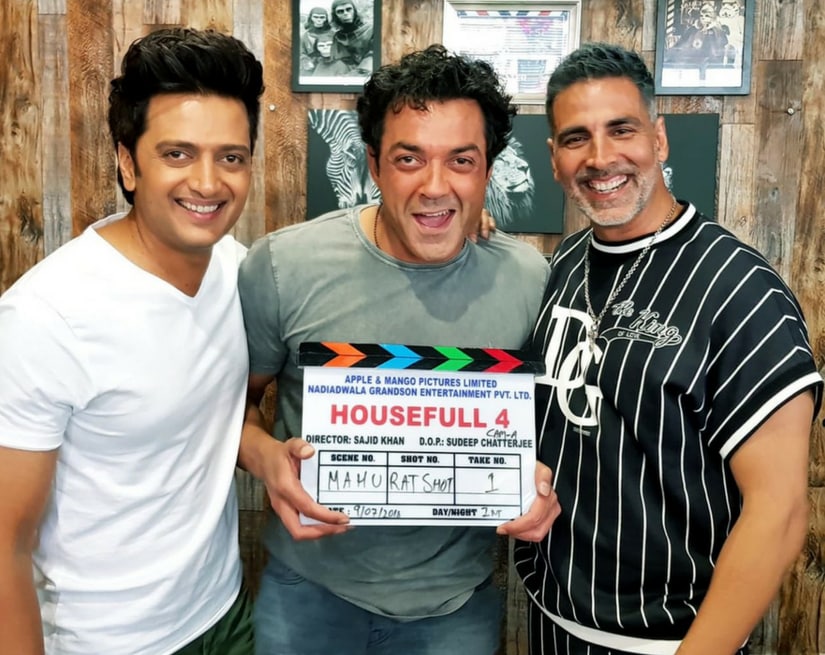A handful of recent sequels, prequels and reboots—ranging from _Housefull 4_ , _Incredibles 2_ , Solo: A Star Wars Story and _Race 3_ —and the way viewers have reacted has thrown up a very valid question: Does the duration between them and the original make any difference? In other words, would audiences have reacted differently if Incredibles 2 had not take nearly 14-years to hit the screens? Or would a few more years before a makeover helped the Race franchise? The answer to all such questions can never be a straight ‘yes’ or ‘no.’ Despite sequels and prequels continuing to make big bucks at the box-office, the comparatively lukewarm response, from both die-hard viewers and critics, to the latest editions seem to suggest that there indeed is an overkill when it comes to the franchise. Yet, the lure of revisiting another variation of Fast and the Furious, Star Wars, or even Rocky (which could now be known as the _Creed_ franchise ) is simply too much to walk away from. So, what is then the ideal sweet time between two films in a series? Looking at the way sequels or prequels have performed commercially, many believe that a gap of two to four years is the best and anything over six often leads to disappointment. While there are enough examples to justify this—the second Bourne film came after a gap of two years and collected nearly $50 million more than the first, and same is the case for the X-Men series—but there are far too many instances where numbers of years didn’t matter. [caption id=“attachment_4706101” align=“alignnone” width=“825”]  Riteish Deshmukh, Bobby Deol and Akshay Kumar start shooting for Housefull 4/Image from Twitter.[/caption] There was an Ocean’s Eleven film every three years, and each follow-up steadily declined in terms of collections and critical praise. Two good examples where the years didn’t matter are Christopher Nolan’s Dark Knight Trilogy and Richard Linklater’s Before series. The former had a gap of three and four years between each, and the latter had a gap of nine years between each film, which more than suggested that distance did make the heart grow fonder. The era that we live in makes the unexpected success of any film, especially the magnitude of it, the only reason to announce sequels, prequels and reboots. Up until the first show of Pirates of the Caribbean: The Curse of the Black Pearl, the studio executives were convinced that the film would tank, but a reversal of fortunes saw them reveal how a trilogy was in the works. There have been five films in the franchise in the last fifteen years, but the never-seen-before character of Captain Jack Sparrow helped the sequel now appeared jaded. The chances of yet another Pirates film getting the same kind of love from the audiences might not be that high, but it making enough money to become a proposition worth exploring would always remain high. The experience of The Matrix and the subsequent sequels is somewhat similar. Like in Hollywood, in India, too, the penchant for sequels and reboots is largely driven by economics. Think of Jackie Chan and a new installment of Rush Hour and you’d see how everything would seem to fall into place. The recent buzz surrounding the possibility of _Sadak 2_ , a sequel that would come nearly 28-years after the original, is an example of how it is about the brand being benefited from. Much like how a new film in the Munna Bhai series would get the eyeballs for Sanjay Dutt, a sequel to Sadak would probably get the same kind of attention. In the end, perhaps it’s not the number of years that make as much of a difference as the passion a sequel could generate within the hearts of the viewers. This could explain the interest in _Doctor Sleep_ , a sequel to The Shining with Ewan McGregor playing an adult Danny Torrence , or the limited love showered on Race 3 in spite of featuring a Salman Khan at the peak of his popularity.
Housefull 4, Incredibles 2, and Race 3 have thrown up a very valid question: does the duration between them and the original make any difference?
Advertisement
End of Article


)
)
)
)
)
)
)
)
)



